Located on the right-hand bank of the Osum River in south-central Albania is the city of Berat. The river divides the city center into three distinct areas: Gorica, Mangalem, and Kalaja. This city, the ninth-largest in Albania, holds particular significance due to its remarkable history and unique architecture, which is a blend of influences from several cultures and civilizations. This one-of-a-kind mix of illuminating history and striking architecture is the main reason I was thrilled to spend a day exploring the city. Exploring them are the main things you must do in Berat, Albania, even if you’re usually not much of a history buff.
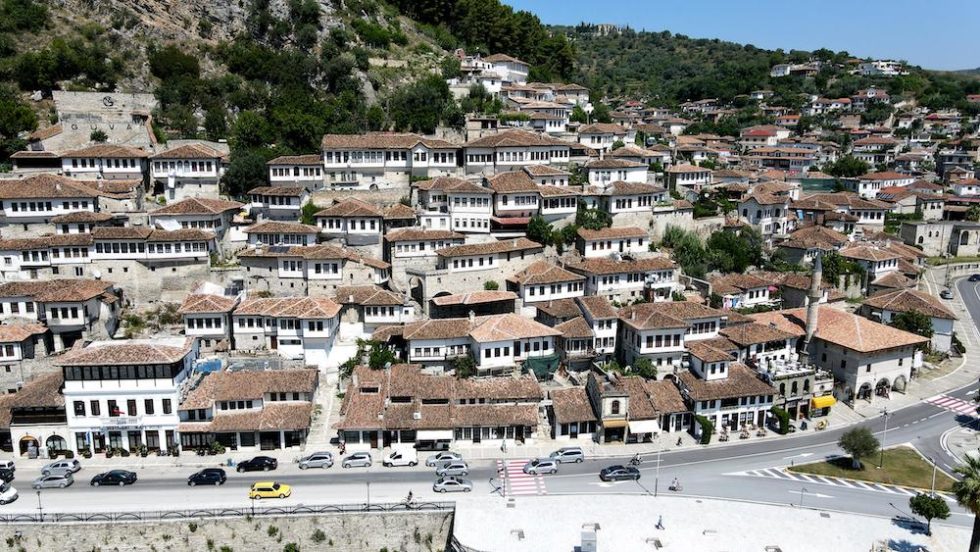
Berat lies at the base of the pine-forest-covered Tomorr Mountain. It was once thought to be a giant according to Albanian legend. In that legend, this giant fought against a second giant called Shipirag, who is now the mountain on the city’s left side. The two giants quarreled over a girl and killed each other. Overcome with grief, the girl drowned in her flowing tears, which became the Osum River.
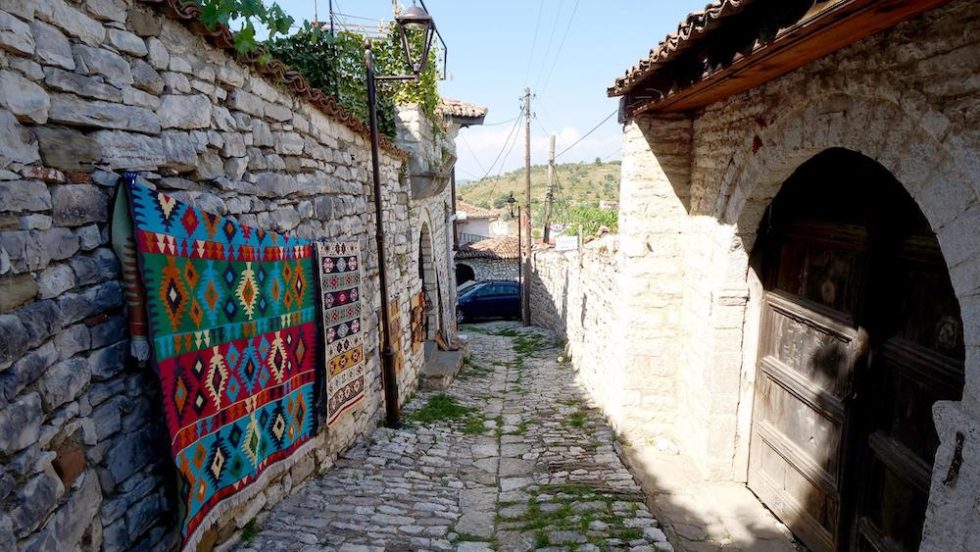
Of course, this is a tall tale, but Berat’s significance is defined more by its actual history. As early as the 6th century BC, Berat was inhabited by an ancient Illyrian tribe called the Dassaratae or Dexarioi. The modern-day city is built atop a Dexarioi settlement called Antipatreia. The settlement was captured by a Roman military officer named Lucius Apustius. Apustius then killed all of the men in the city after razing its walls.
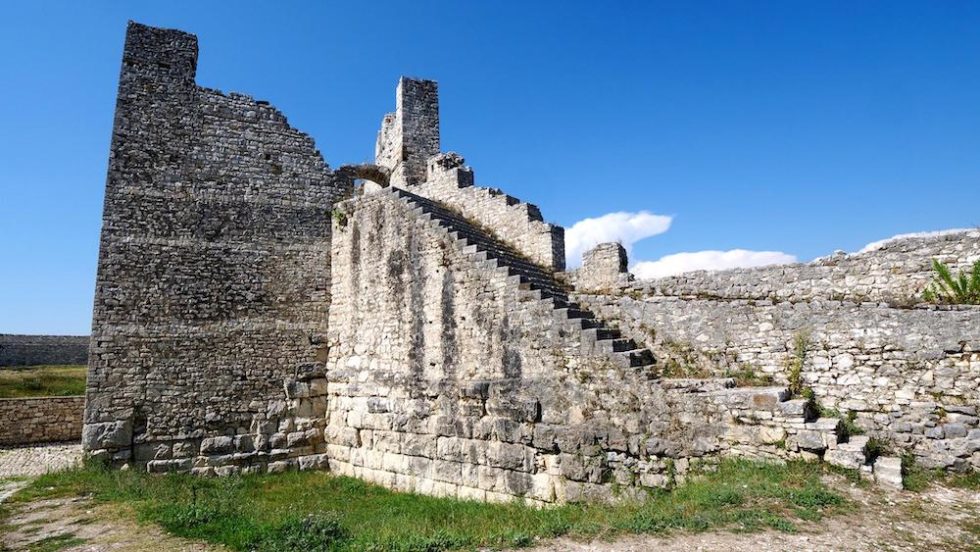
Later, Berat would be invaded multiple times by Slavs after the western Roman Empire fell, and captured by the First Bulgarian Empire in the 9th century. It exchanged hands several times between the Byzantine Empire and Second Bulgarian Empire from the 11th to 14th centuries before the Ottomans captured it in 1385.

Many of the beautiful houses built during the Ottoman period are still standing today on the left bank of the Osum River. These homes are a big reason why Berat was named “a rare example of an architectural character typical of the Ottoman period” by UNESCO. In 2008, the entire city of Berat was added to a pre-existing UNESCO World Heritage Site that also included the city of Gjirokastër.

I was fortunate enough to visit both Berat and Gjirokastër on my first trip to Albania in August of 2020. That trip changed my life. In Berat, my friend Erjan from Travel Media EU took me on a fascinating trip through time as we toured the charming lanes of its old town, met exceptionally kind people, and marveled at its world-renowned beauty. I absolutely adore this city, and I’m betting you will, too. These are the 5 things you must do in Berat, Albania.
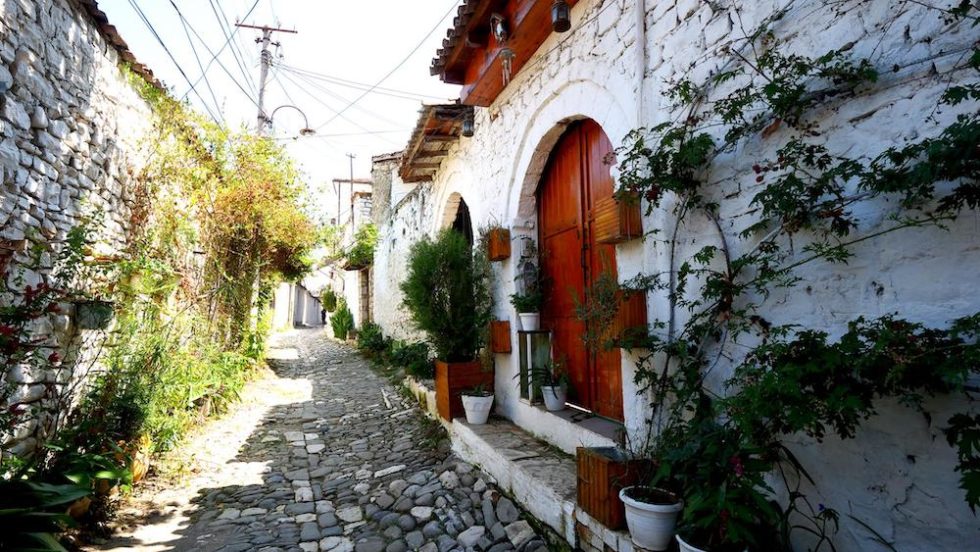
Erjan and I began our exploration of Berat by touring its three distinct areas. The first of these for us was Gorica, the area on the left bank of the Osum River, which is known for its collection of stone Ottoman homes. These homes have been renovated over the years and are known for their many windows. It is said that there are a thousand windows in this part of the city!
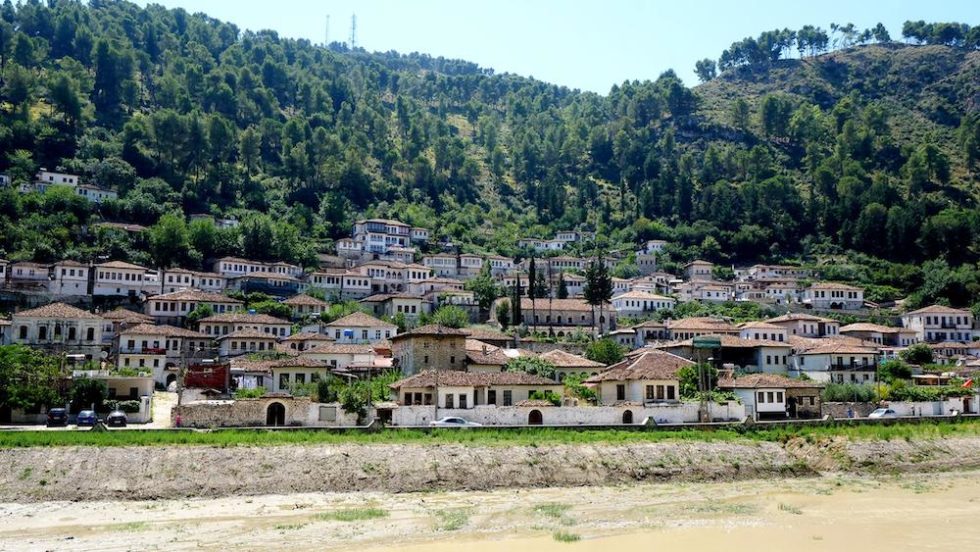
To reach Gorica, you must cross Gorica Bridge, which was first mentioned by a Turkish traveler in the 17th century. After you cross into Gorica, expect to be transported back to the 18th century. The homes and businesses there have a distinct Ottoman and Mediterranean look, which reminded me of my time in Cannakale, Turkey.
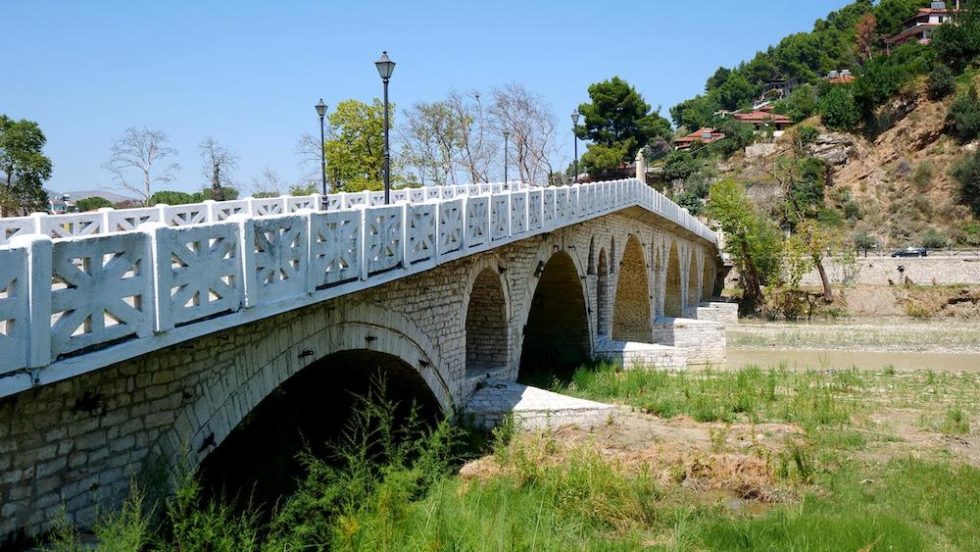
Many of them have been renovated over the years, but because Berat is a UNESCO Site, all renovations must be done in the previous style to preserve the city’s historical integrity. As I toured the neighborhood, I noticed plaster and other signs of updates in some of the homes. I could also see a lot of the original stone walls.
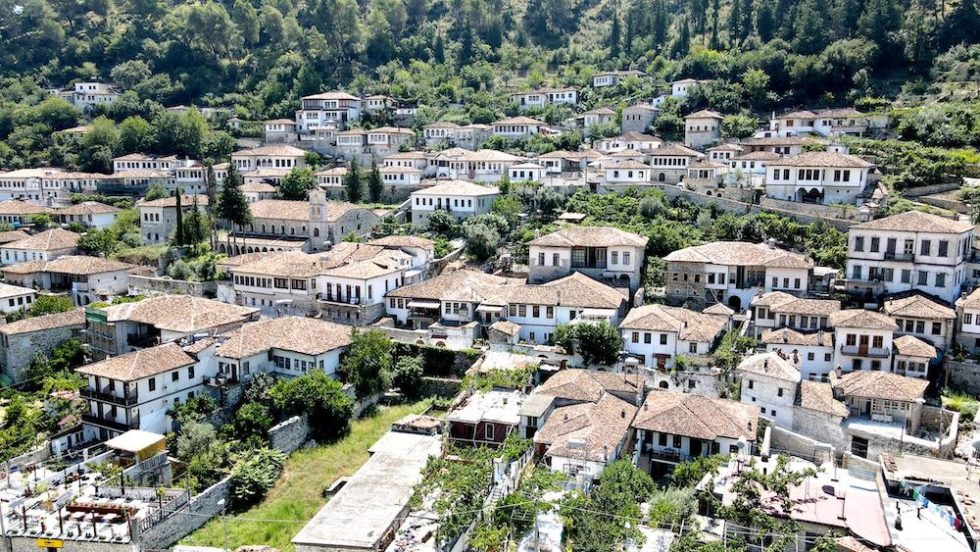
Albanian families typically lived in one building with multiple entrances, and each family had their own entrance. The entranceways are intentionally low so that visitors must bow down to the family inside as a sign of respect.
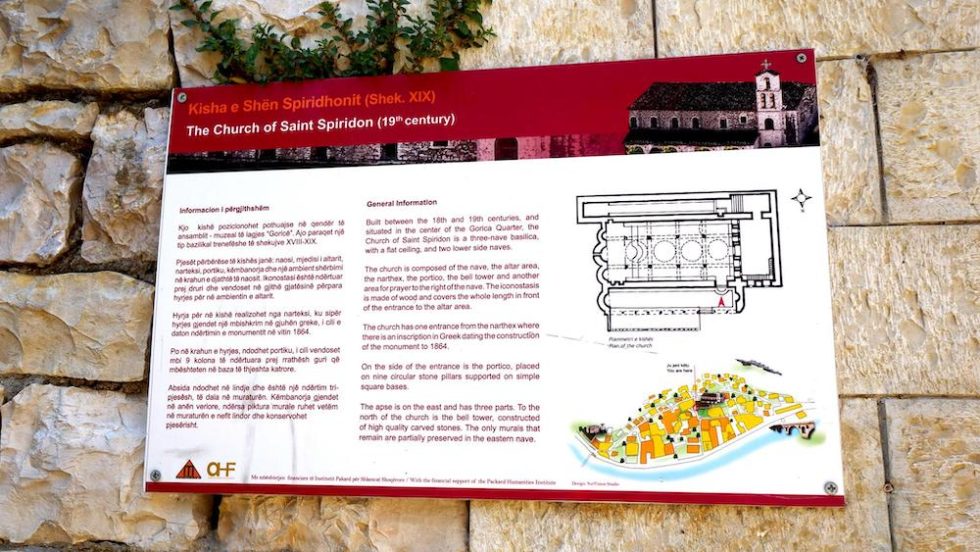
In addition to the centuries-old homes, I also suggest visiting the Church of Saint Spiridon in Gorica. It’s a beautiful, 19th-century church that adds even more charm to this more authentic and less touristy part of Berat. It’s one of the best things to see and do in Berat, Albania!

From the Gorica area, you can cross the fifty-year-old Ura E Varur steel bridge to get to the Mangalem area. This area of the city lies at the base of the hill topped by Berat Castle. It’s decidedly more touristy than Gorica. That said, it still exudes a wonder and an entrancing charm that I soon came to associate with the city.
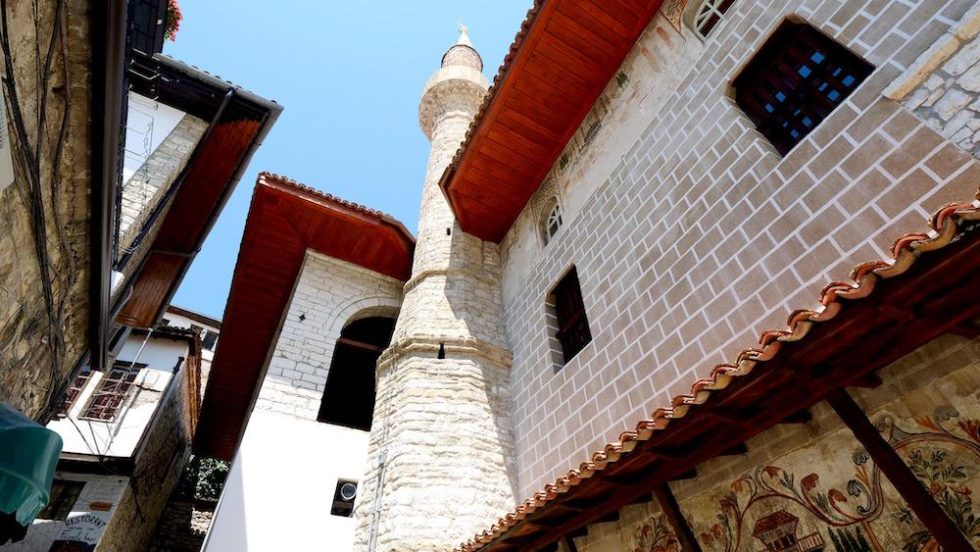
There are more Muslim structures in this part of the city, such as the 16th-century Bachelor’s Mosque. Unfortunately, it was under construction the day I visited Berat, but I was able to view its gorgeous exterior. There are quite a few beautiful old paintings and Arab scripture on the outside.
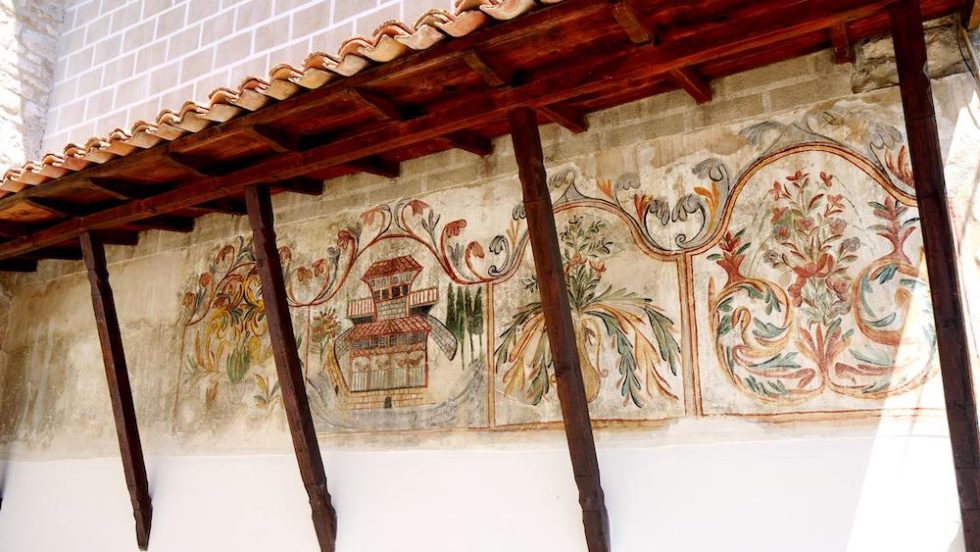
Bachelor’s Mosque was just the latest example I saw on my trip of how Albania is a crossroads of multiple cultures that have coexisted peacefully for years.

As you walk the main street in Mangalem, you’ll pass a number of souvenir shops, restaurants, cafés, hotels, and commercial spaces. Don’t let that deter you; in fact, you’re sure to find some stunning, authentic handmade crafts in the shops. My favorites were the magnificent wood carvings I found at a shop called Unique Art.
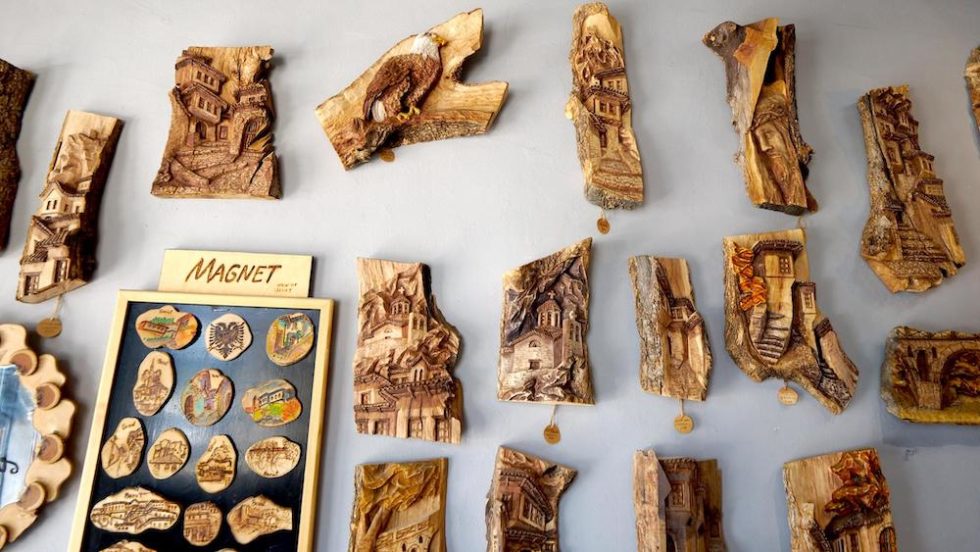
There, you’ll find handmade works of art, each painstaking carved from a single piece of wood. They offer incredible wall hangings depicting sites around Berat, including the Ottoman homes in Gorica, Kalaja Castle, local churches, and more! I found a carving made from an olive tree that caught my eye, and it only cost me €65! Visiting Unique Art is easily one of the top things to do in Berat, Albania!
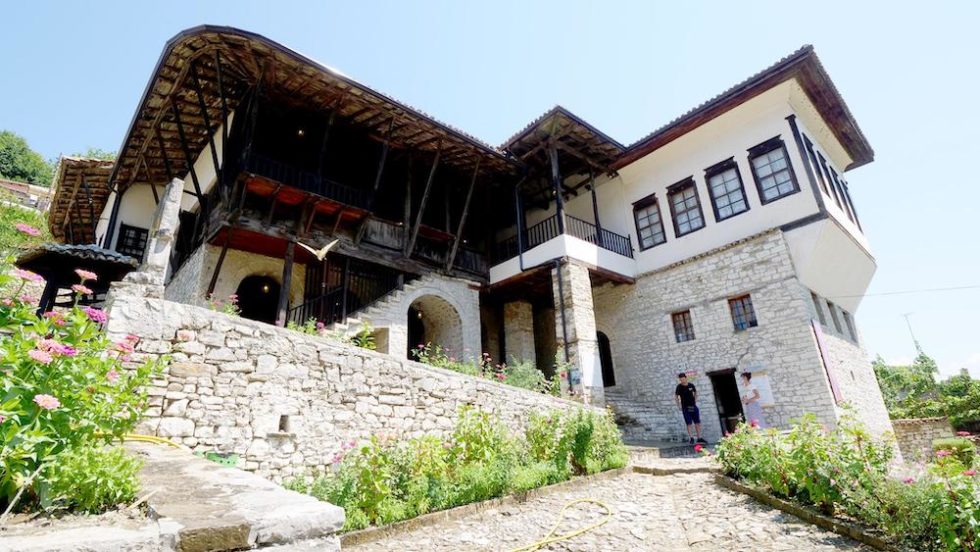
One of my favorite things to do when I travel is to visit local ethnographic museums. If you’re not familiar with them, these are special museums that showcase what life was like during a certain time period. They’re often located in converted houses and recreate the layout and décor of traditional homes.
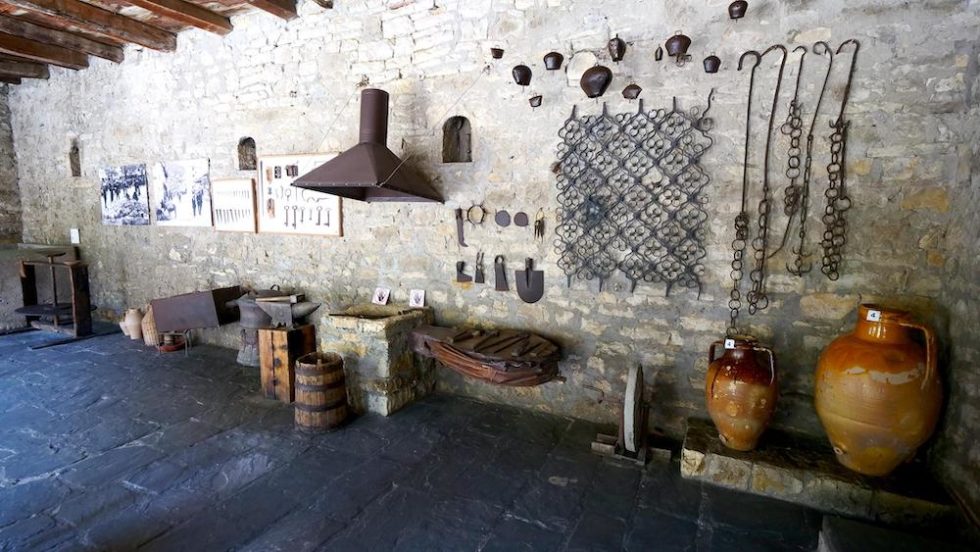
The National Ethnographic Museum of Berat is located in a 400-year-old traditional house from the 18th century. It costs just 200 lekë, or just under $2 USD to enter. Inside, visitors can tour the home and see the various rooms and how they were used during the Ottoman period.

You’ll see displays of clothing, headpieces, textiles, pottery, and much more. I personally loved seeing the museum’s large guest room! It was a nice peek into what Albanian hospitality was like during the Ottoman period. If you love history like I do, touring the Berat Ethnographic Museum is easily among the best things to do in Berat, Albania.

It’s a can’t-miss! Keep in mind that the museum’s days and hours change depending on the time of year, so double-check before you visit!
National Ethnographic Museum of Berat
Rruga e Kalasë
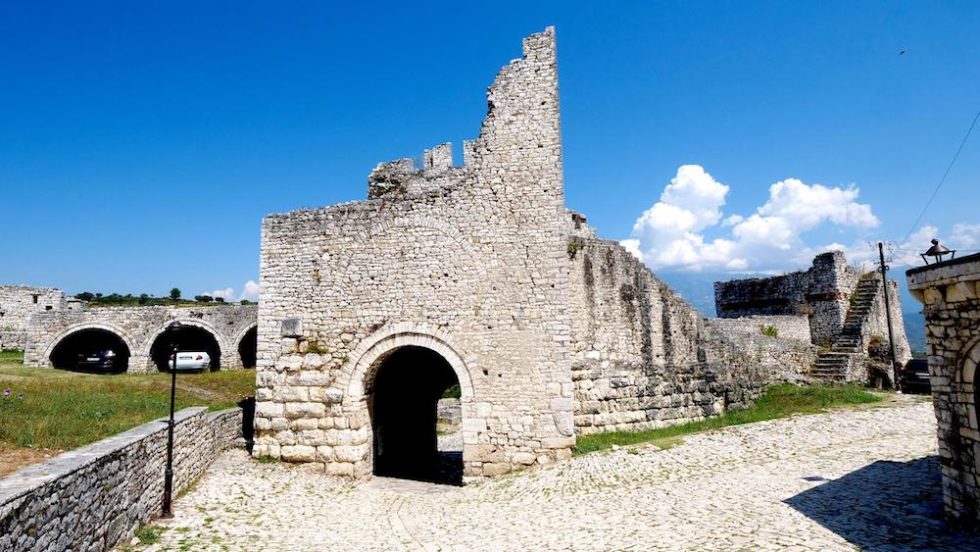
The final area of Berat you must visit is the Kalaja area, which lies on castle hill. At the very top is Berat Castle, a 2,400-year-old stronghold that has Illyrian roots. Since it was built, the castle has been renovated and updated by other empires that have controlled the area. But because of the way the updates were done, you can actually see the layers of construction done by each empire.
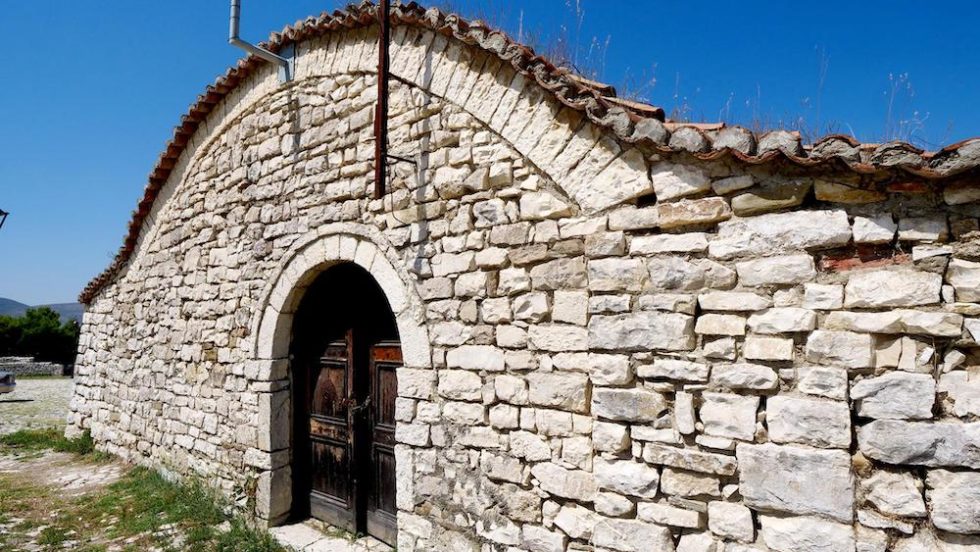
The stones that make up the lowest layers of the castle were placed by the ancient Illyrians. The layers of red bricks and cement above them were built by the Romans, and the smaller, white stones higher up are the Ottomans’ handiwork.
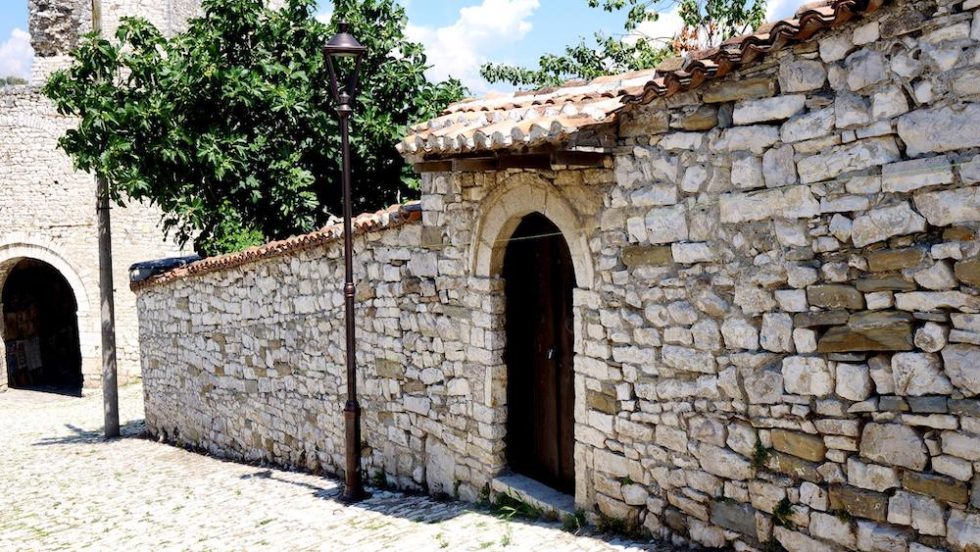
Unlike many other castles around the world, Berat Castle is a living castle, which means that people still live inside its walls. Inside, you’ll find a unique community that contains stone houses, restaurants, and souvenir shops. There’s even a tiny church that was disguised as a house in the 16th and 17th centuries. During that time, churches were forbidden in Ottoman towns!
Berat Castle
Rruga Mihal Komnena 5001
Berat, Albania

When you get hungry, I highly recommend dining at Bar Restorant Onufri, a cozy, taverna-style eatery inside the castle. Like nearly every restaurant I visited in Albania, the owner is exceptionally friendly and kind, and the service and hospitality are off the charts. My buddy Erjan and I chose to dine al fresco on their terrace, where we had a great view of the castle around us!
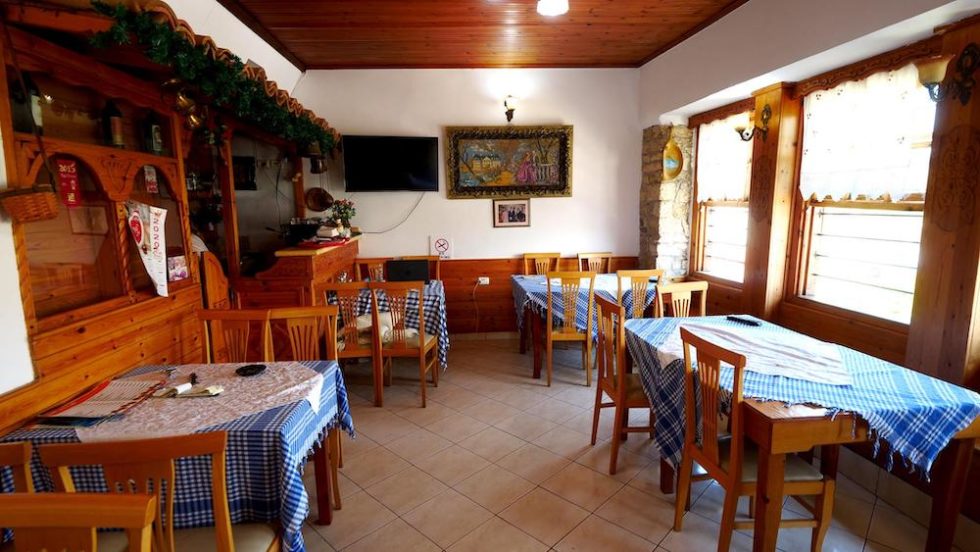
As with any Albanian meal, we began with some rakija (a strong fruit brandy that is very popular throughout the Balkans) before diving into our entrees. We ordered a massive, authentically Albanian spread that included stuffed cabbage, cannelloni, beans, eggplant, chicken with rice, and okra.
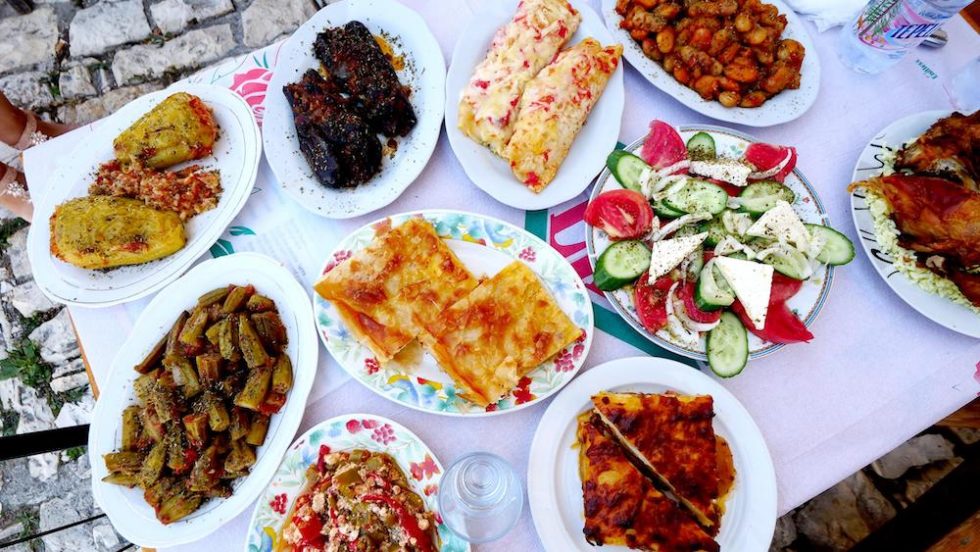
We also had fërgesë (a baked dish containing feta cheese, bell peppers, tomatoes, and onions), byrek (a savory Balkan pastry that can contain cheese, meat, and/or vegetables), and moussaka (an eggplant casserole with a hearty meat sauce that is topped with bechamel).
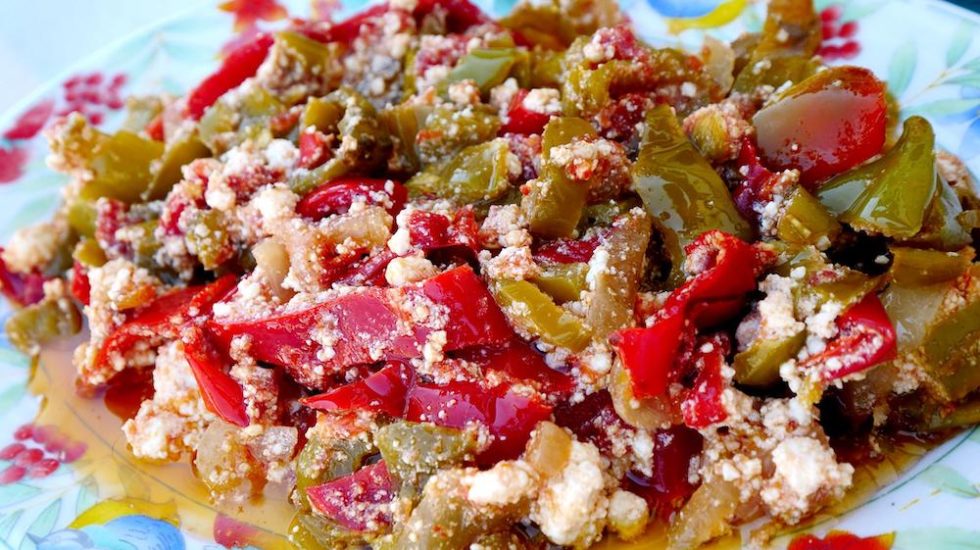
Of all the extraordinary meals I had over my twelve days in Albania, this one was one of my favorites. I loved the addition of thyme in the moist and crunchy beans, and the juicy eggplant was simply heavenly. The stuffed cabbage was also bursting with mouthwatering flavors that I couldn’t get enough of!
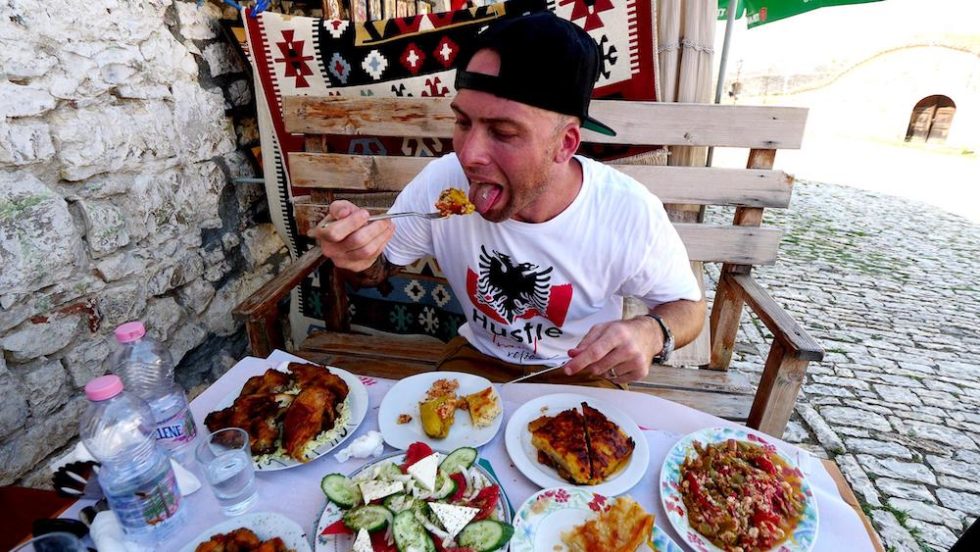
The flakiness of the byrek combined with the fluffy goat cheese inside had my taste buds dancing, and the moussaka was almost like an Albanian lasagna: hearty and homey, with a crispy layer on the bottom that added a nice, contrasting texture!

The oily fërgesë was full of mouthwatering pepper flavor, but if I’m being completely honest, the eggplant stole the show. I’ve eaten and loved eggplant in many countries around the world, but the freshness of Albanian eggplant makes it one of my favorite varieties around the globe!

The flavors are so vibrant and you can taste the fact that it’s farm-to-table. Once you’ve had fresh, organic dishes that come straight from a farm, you’ll never look at food the same way again.
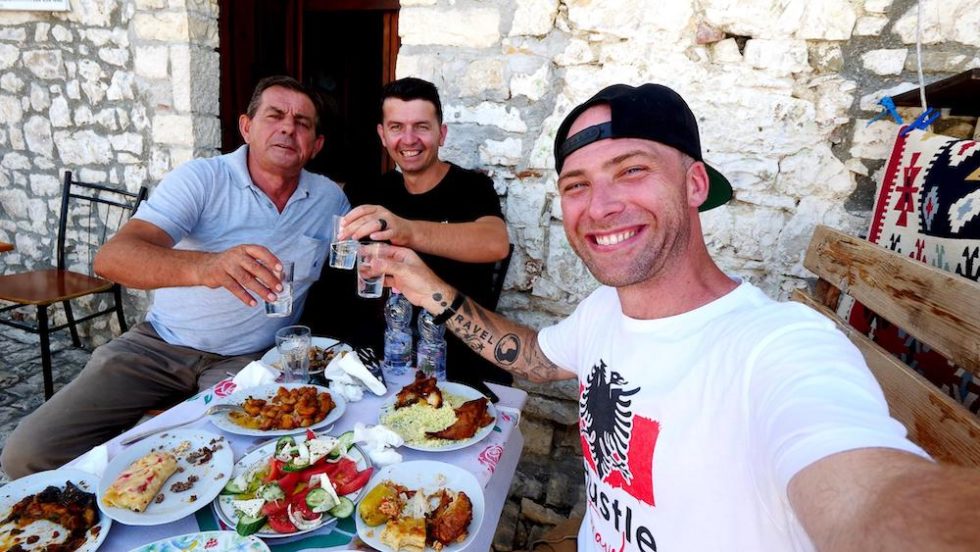
By the time I left Bar Restorant Onufri, my belly was full and I’d had yet another incredible local experience you can’t get anywhere else. I can’t stress how fantastic every single dish was. Eating there is easily one of my favorite things to do in Berat, Albania! You won’t regret it!
Bar Restorant Onufri
Berat Castle
Rruguca Mbrica
Berat, Albania
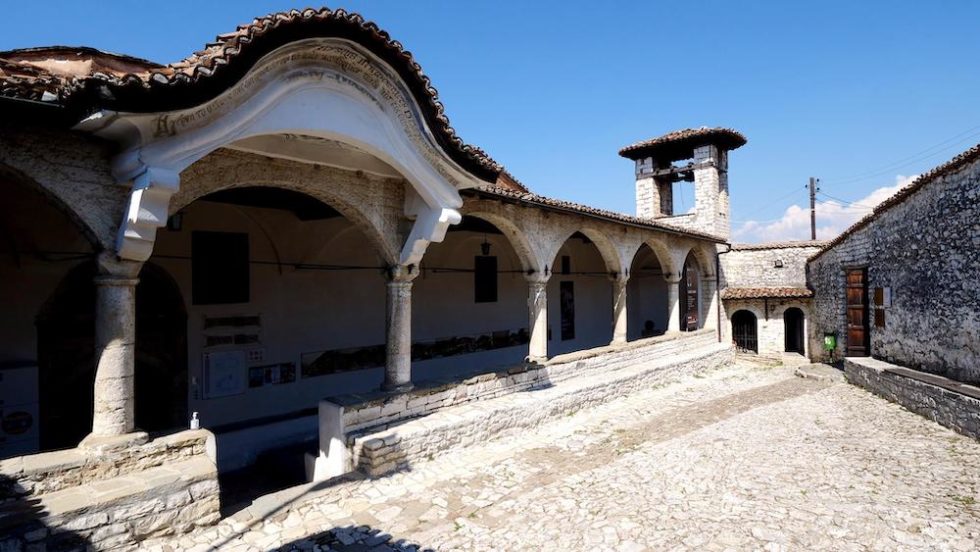
In addition to the restaurant, there are several other things you must on Castle Hill in Berat, Albania. One of them is visit Muzeu Onufri, an 18th-century church that was later converted into a museum. The museum is dedicated to a 17th-century painter named Onufri. He was famous for using a unique red hue in his paintings.
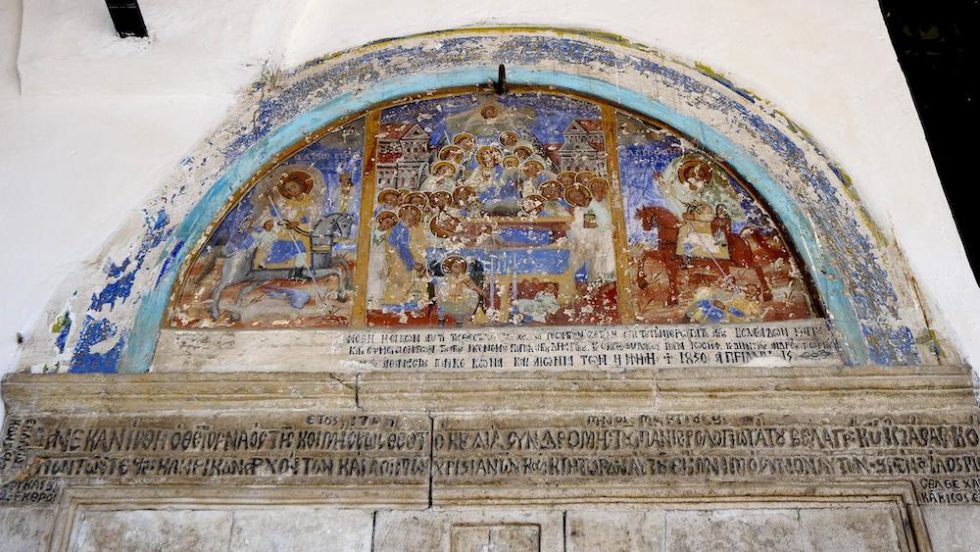
Before you enter the museum, be sure to admire the beautifully preserved frescoes in the courtyard. They date back to 1797 and are absolutely breathtaking. Keep in mind that, while you can film video of the exterior of the church, filming is forbidden inside.
Muzeu Onufri
Berat Castle
Rruga Mihal Komnena 5001
Berat, Albania

As much as I enjoyed the museum and the restaurant, the highlight of my time in Berat came after Erjan and I walked to Tabja, a watchtower atop the hill. You can easily reach it by following the ancient walls.
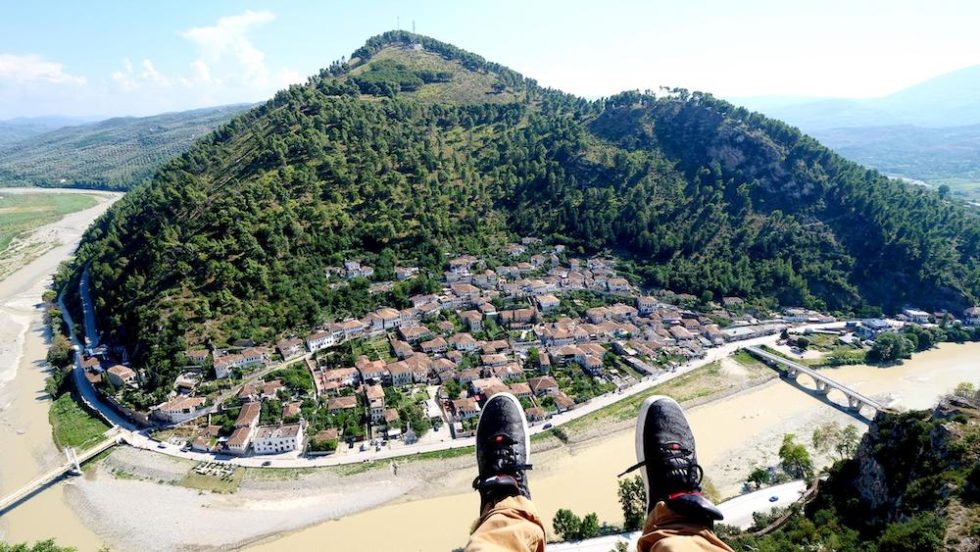
Tabja is the highest point in Berat and rises high above the entire city. From there, you get absolutely stunning views of all of the city’s landmarks, including the Ottoman houses, the river, and the bridges. From there, you can also see mountains, hills, and vineyards in the distance. It’s an unbelievable view—one of my favorites in all of Albania!
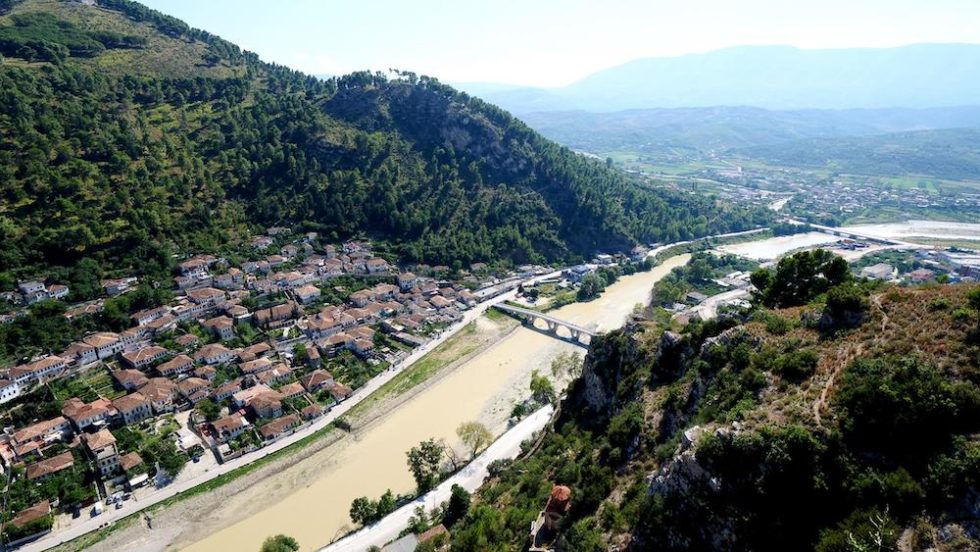
Trust me, no visit to Berat is complete without taking in the view from atop Tabja and admiring this city’s beauty from above. I always gain a greater appreciation for the places I visit when I view them from above, and Berat is no exception. It is a stunner, and one of the things you must do in Berat, Albania!
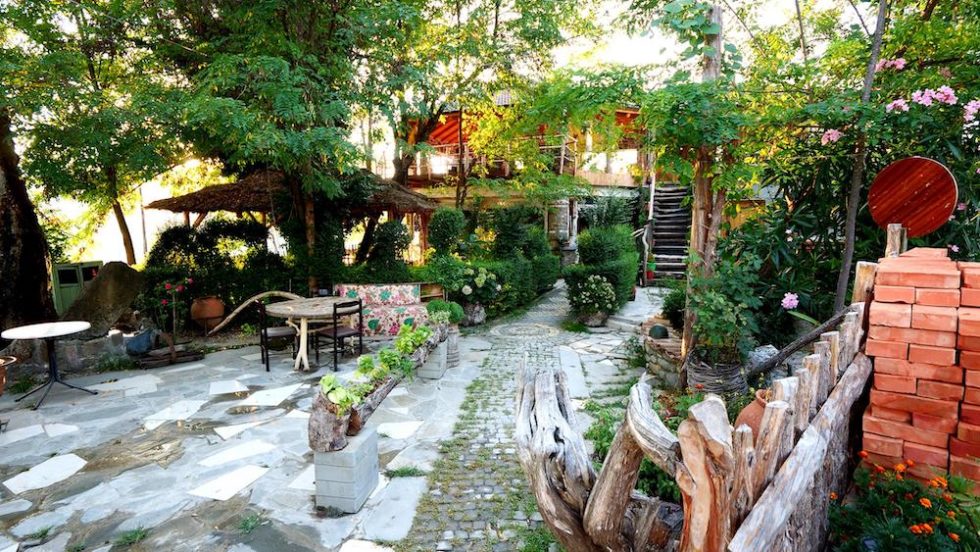
In addition to its rich history and unique Balkan culture, Albania is also well-known for its agrotourism. Scattered throughout the country are numerous farms and resorts that offer unique experiences that allow guest to see what it’s like to live off the land while promoting local cuisine and supporting local farmers and workers. One such place is Alpeta Agrotourism & Winery, which is located 25 minutes from Berat by car.

This agrotourism farm and winery was founded in 1991 by the Fiska family, who still run the property today. Their grounds are covered in olive trees, vineyards, and gardens, which produce the food and drink you’ll consume there! That includes their white wine and their two reds, as well as the sana berries they use to make rakija!
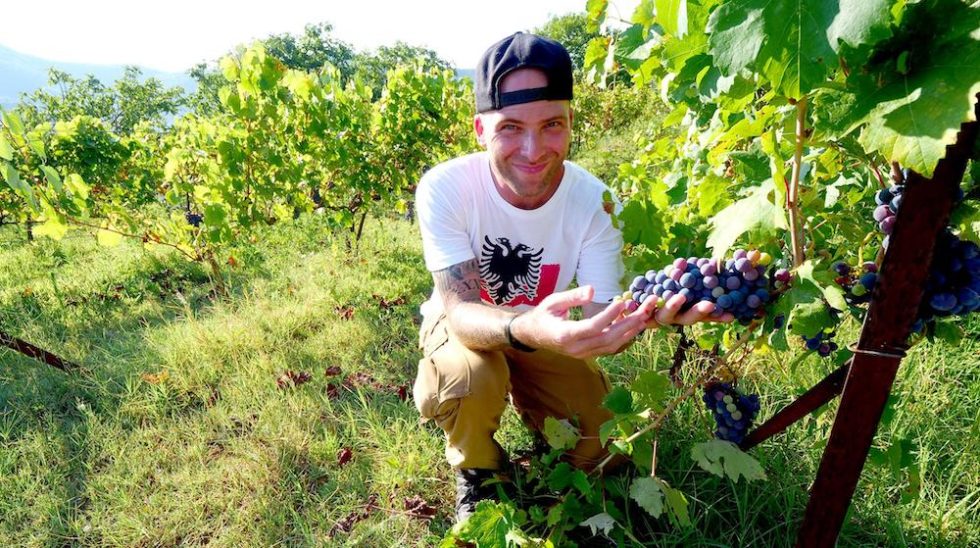
Overlooking the property are beautiful open-air terraces, which have a distinct mountain feel and allow visitors to enjoy a stunning view of the Albanian countryside as they wine and dine.
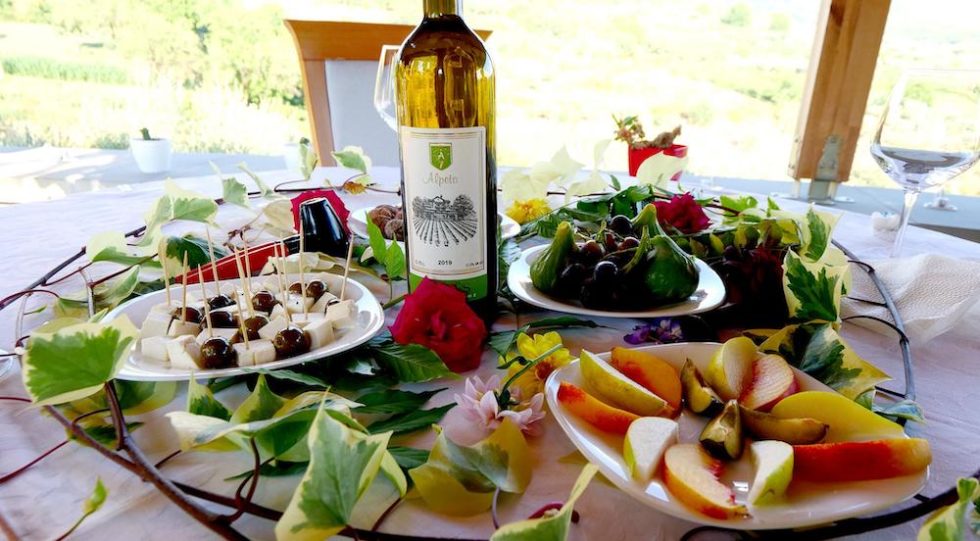
There, you can enjoy a tasting of their dry and fruity pules wine, a white wine that is made from indigenous pules grapes. Their full-bodied merlot cabernet is fantastic, as is their Raki Rrushi, which is a grape rakija that contains a whopping 45% alcohol. If you’d like to tease and stump your palate, try their almond rakija, which has a slightly nutty and earthy flavor that I couldn’t place at first!
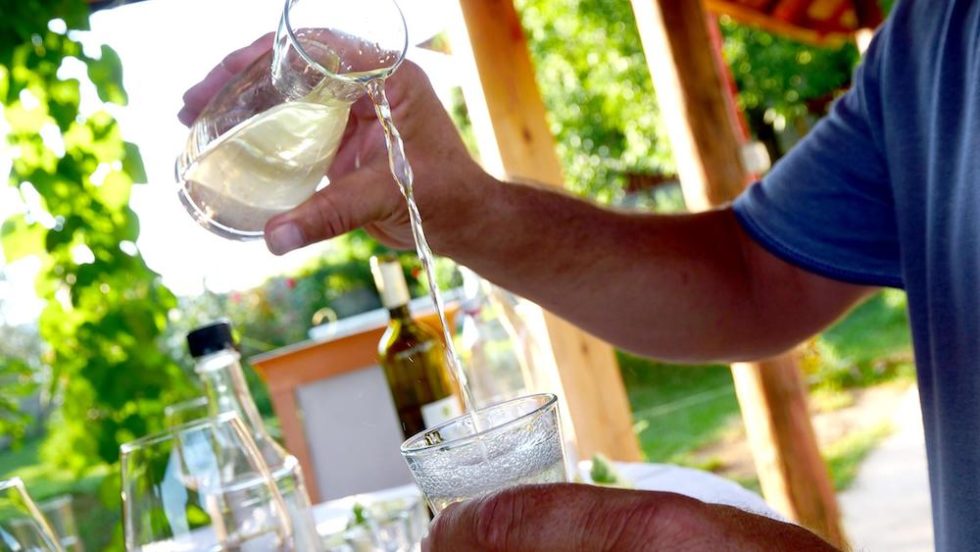
While you try the various wines and rakis, also recommend trying some of the other foods produced on-site. They include white cheese, walnuts, peaches, olives, and some truly massive figs!
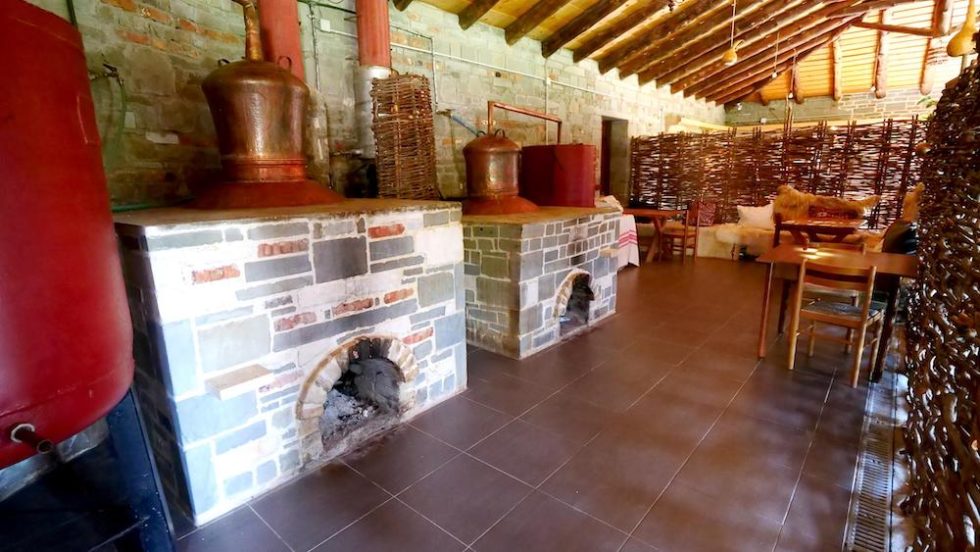
One of my favorite things about Alpeta Agroturism & Winery is their winery. The general manager, Ardit, took me there and let me try some of their magnificent merlot cabernet straight from the tank. I could tell that it was young and needed more time to mature, but even in an unready state, it was still very tasty.
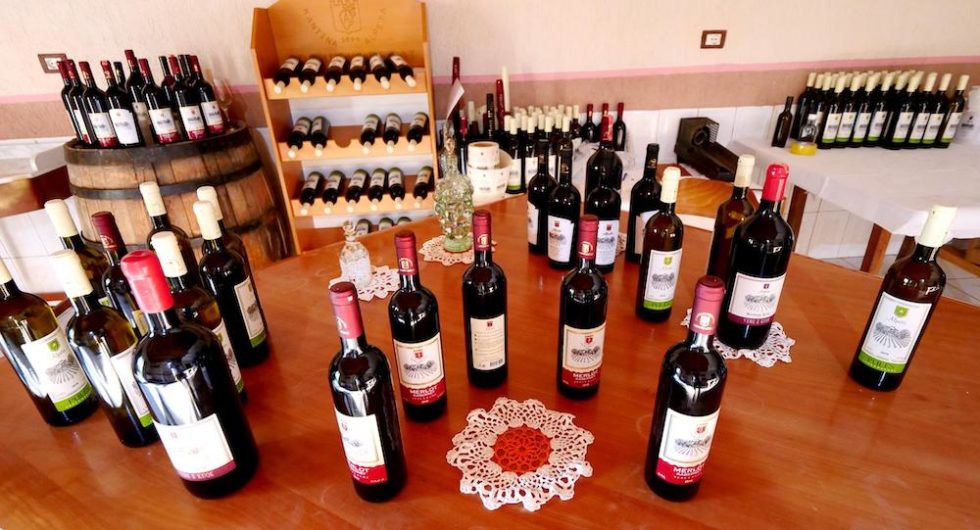
After trying the wine, Ardit showed me their bottling process. They bottle wine for their customers and label them by hand and let them store for at least three months before shipping them.

If you love great wine, fresh food, and amazing people, be sure to stop by Alpeta Agrotourism and Winery when you come to Berat. The Fiska family will take good care of you. It’s one of the best things to do in Berat, Albania!
Alpeta Agrotourism & Winery
Roshnik Qendër 4012
Roshnik, Albania
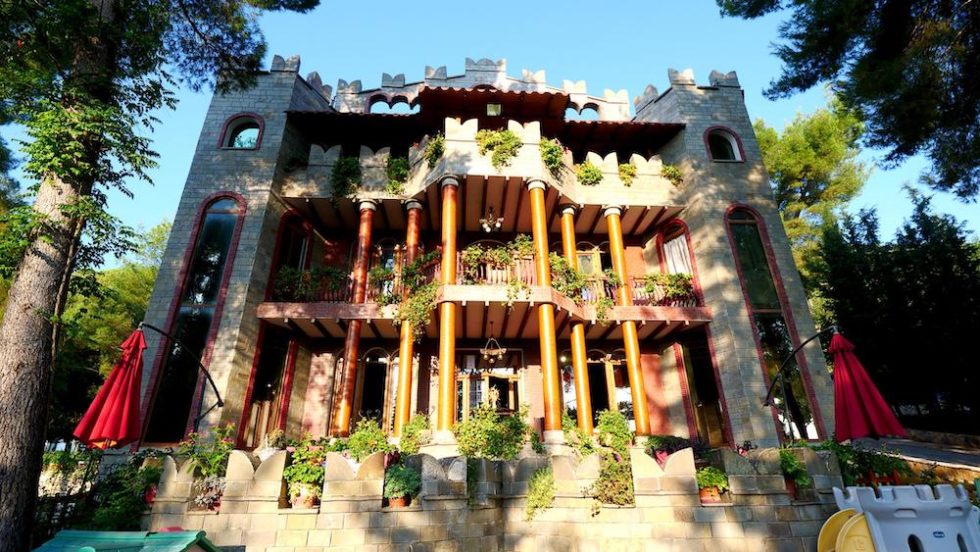
Of course, while you’re in Berat, you’ll need a place to lay your head at night. For that, you’ll need to book a reservation at Castle Park Hotel in the city. The hotel actually looks like a castle, and the medieval-style décor inside matches the ambience. There, the owner, Alma, and her staff treated me like a king, and took care of me from the moment I arrived until the second I left.
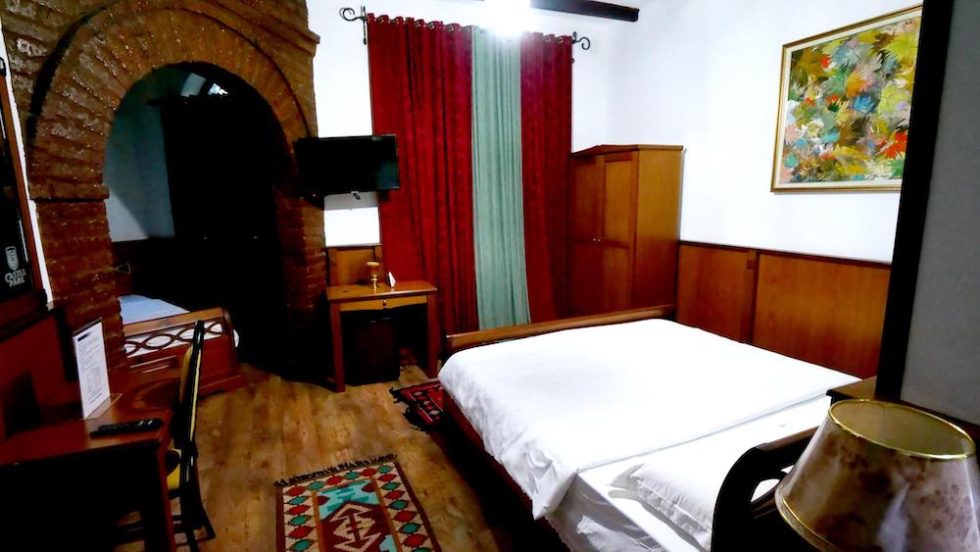
The accommodations at Castle Park Hotel are some of the most immersive I experienced on my trip. The rooms would not be out of place in a real castle! My room on the second floor contained a king-sized bed, as well as a separate twin bed. There was also a clean, modern bathroom with a toilet, shower, and bidet. Best of all, I had a balcony that overlooked the hotel’s terrace on the first floor!
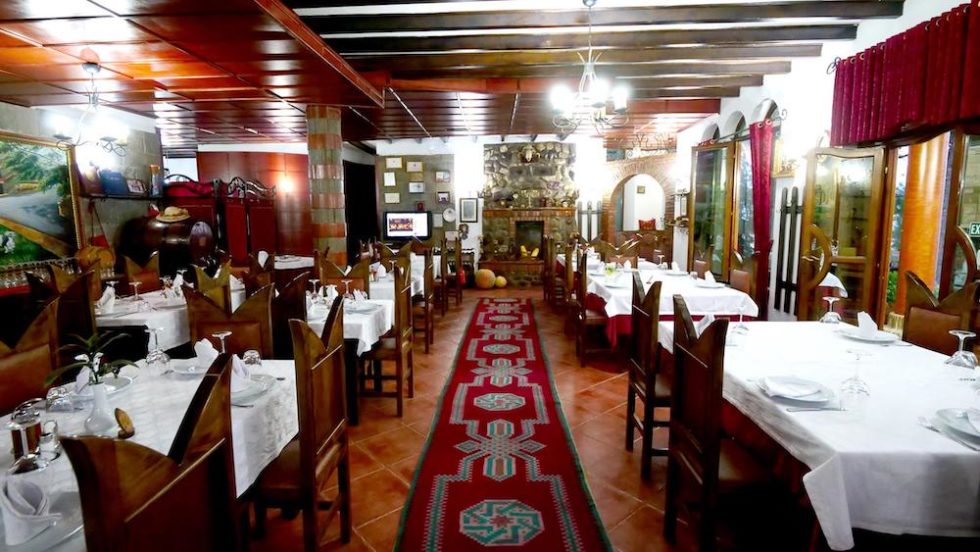
Long before you sit down to have a meal at Castle Park Hotel, you’ll get a taste of why Alma is considered the president of Albanian slow food in Berat. I was welcomed to the hotel with a glass of fresh peach juice, which tasted like pure fruit.
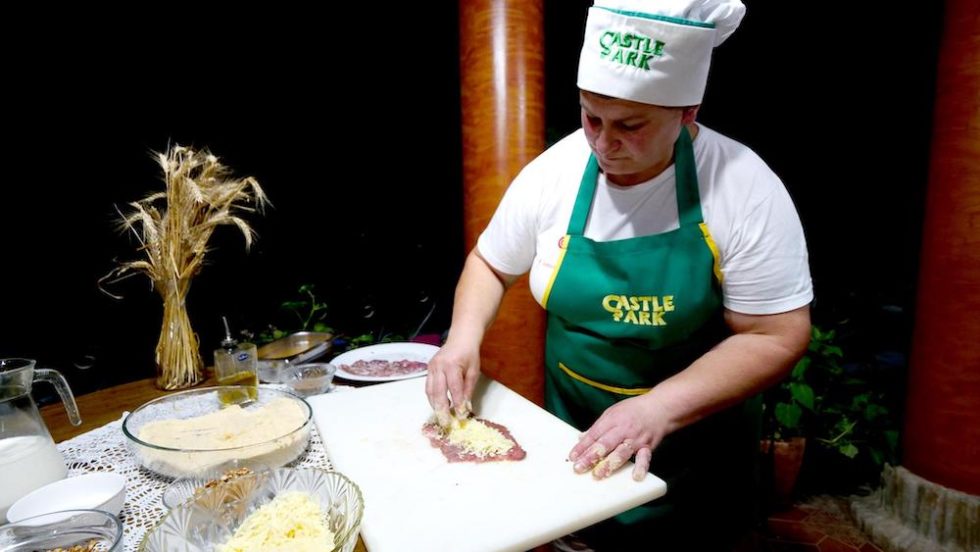
Later, for dinner, Alma and her amazing chefs presented us with a massive spread that included olives, fig salad, chicken, stuffed eggplant, lamb with seven herbs, byrek with tomatoes and herbs, wild cabbage, stuffed grape leaves, cheese, homemade bread, wine, and rakija!
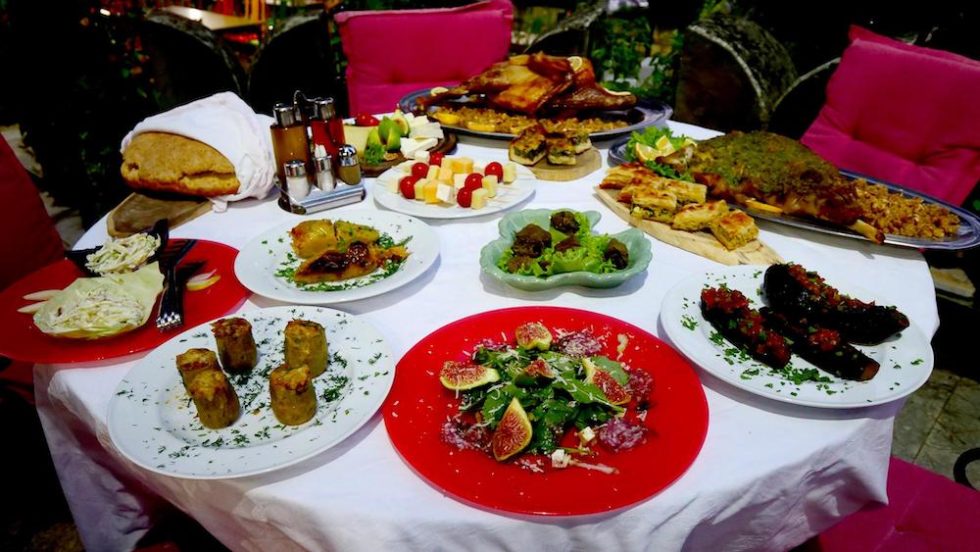
The eggplant, which had been stuffed with onions and red peppers, had my mouth watering from the jump. I also loved the crumbly but creamy cheese, the japrak (grape leaves stuffed with rice), fig salad, and stuffed peppers.
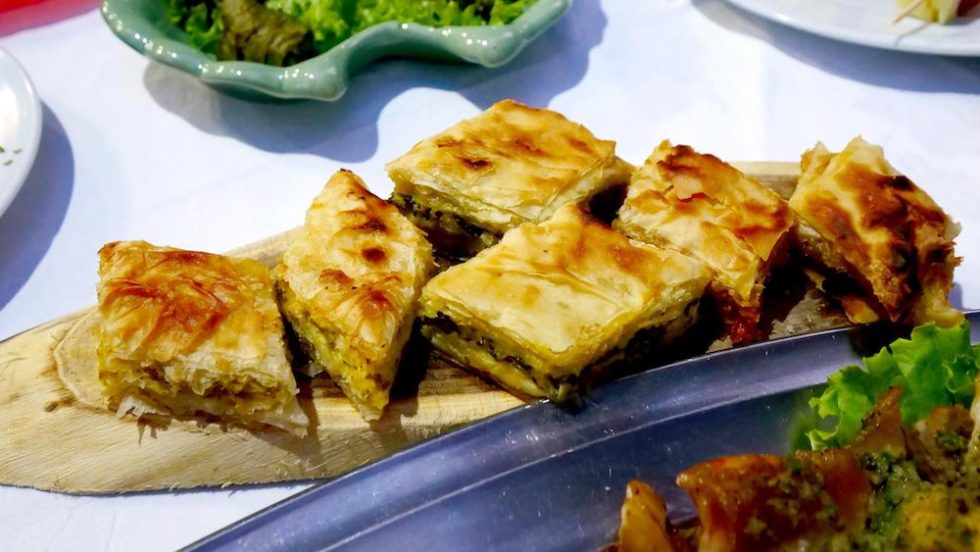
You also must try their phenomenal tomato-and-onion byrek! But the highlights were their unreal roasted turkey and a fatty, juicy lamb that was perfectly cooked and melted in my mouth. It was to die for!

Breakfast at Castle Park Hotel is every bit as tasty as their dinner. Before I got a chance to try it, Alma invited me back into the kitchen. There, I got to see how they make a fried dough dish called petulla, fresh bread with corn, and even how they churn butter! I tried my hand at churning the butter myself. It takes a lot of upper arm strength to do it!
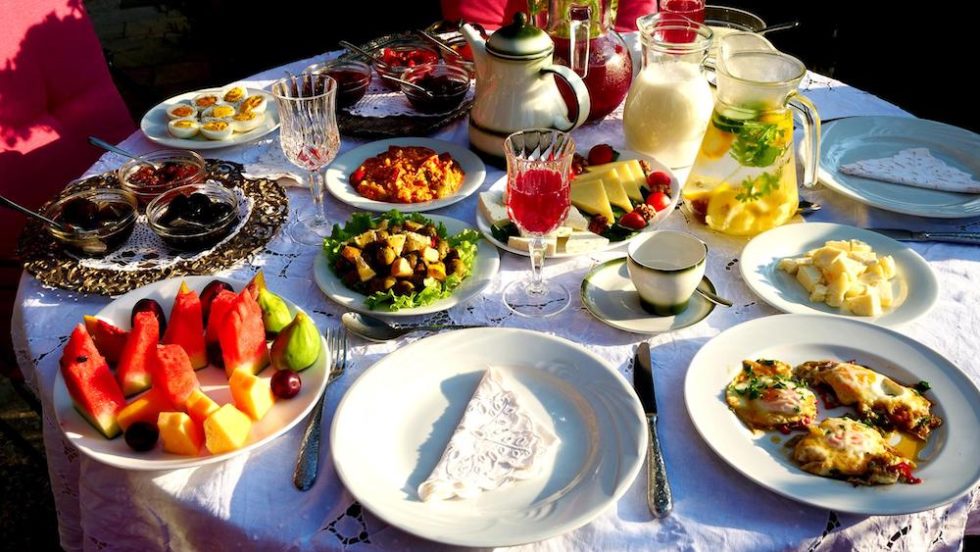
The fresh butter was soft, tasty, and melted almost right away. Alongside it, we had eggs with herbs, petulla, and a whole fruit preserve called gliko. There was also fresh cheese, olives, watery yogurt, and the ever-present fërgesë! The gummy and syrupy fig gliko was a highlight for me, as it exploded in my mouth when I bit down.
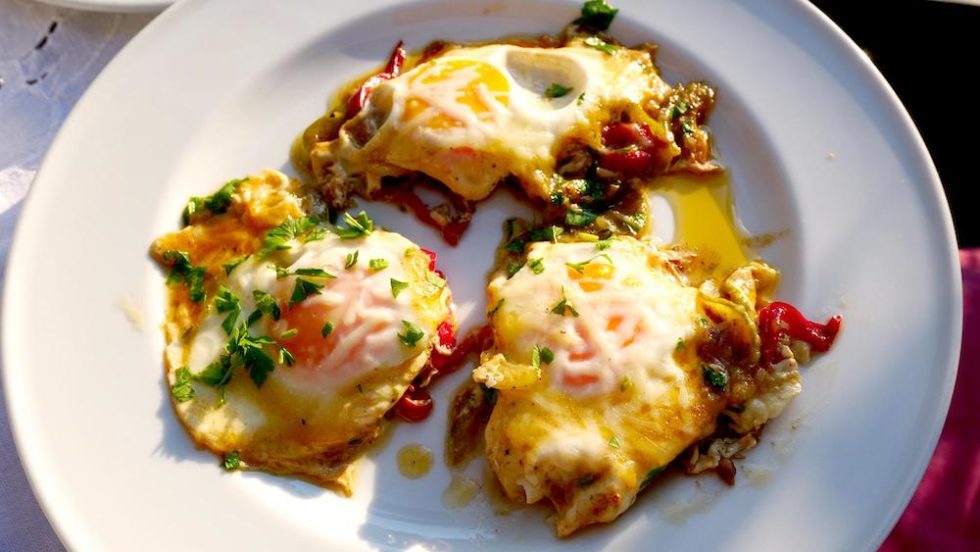
My favorite dish was the fërgesë, which contained fresh goat cheese, red and green bell peppers, and scrambled eggs. It was phenomenal! I loved the combination of the earthy peppers, fluffy eggs, and smooth but crumbly cheese.
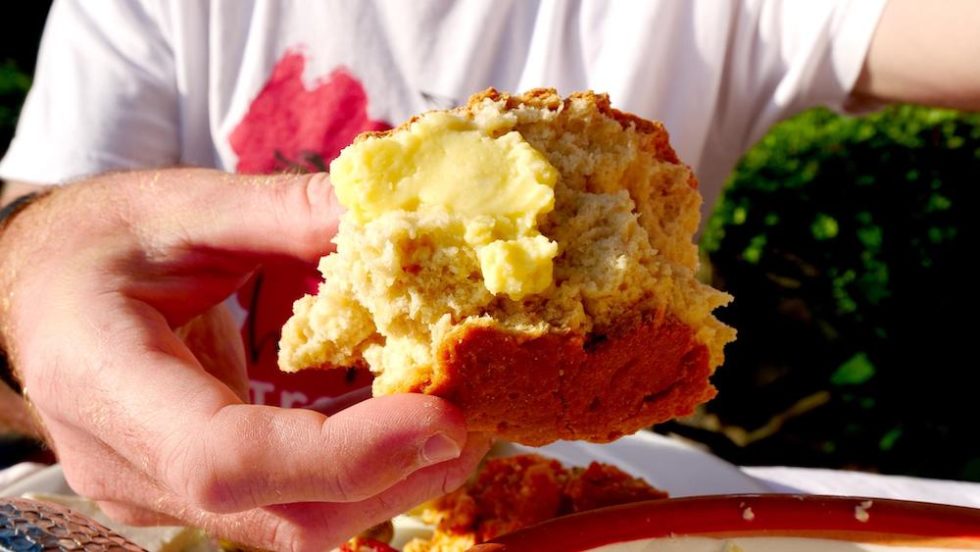
There are multiple ways to make fërgesë in Albania, but they’re all fantastic. It’s a dish you must try in every city, as it’s different just about everywhere you go. Having it is certainly one of the top things to do in Berat, Albania!
Castle Park Hotel
Rr. Berat-Drobonik
Rruga Kristaq Tutulani
Berat, Albania
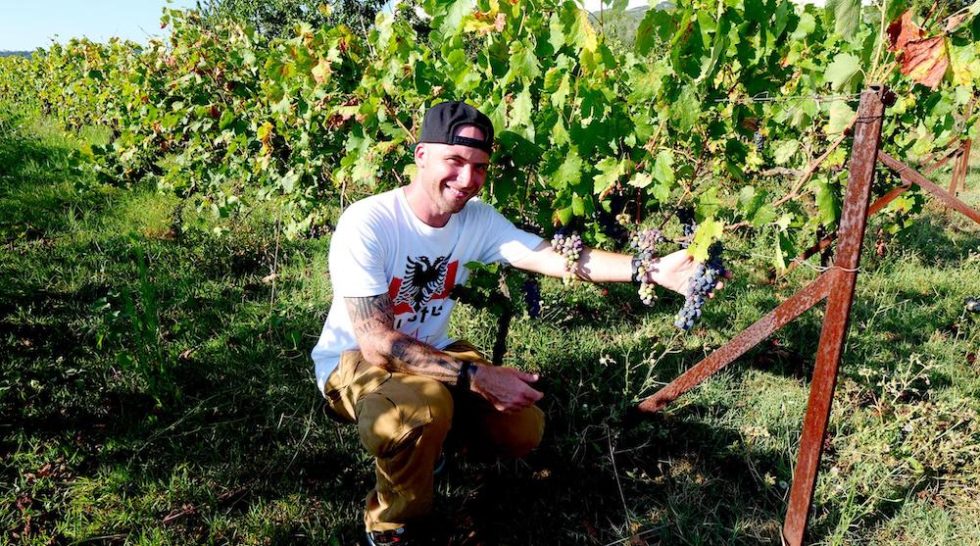
With so many historically- and culturally significant cities in Albania, it’s easy to think that they’d all start to feel the same after a while. But like all the others I visited, Berat stood out and had a charm and a vibe that was distinctly its own. Whether you’re a history buff, an architecture nerd, a shopper, or a foodie, there’s something for you in Berat. This one-of-a-kind city is like a time capsule, with echoes of the present and past at every turn. It’s one of my favorite cities in Albania and I’m sure it will be one of yours as well. Book a trip to Albania today to experience the wonders of Berat for yourself!
NOTE: If you need to check the visa requirements of a particular country, click here. To apply for a visa, find up-to-date visa information for different countries, and calculate the cost of a particular visa, click here!
Counter
101 Countries • 1432 Cities